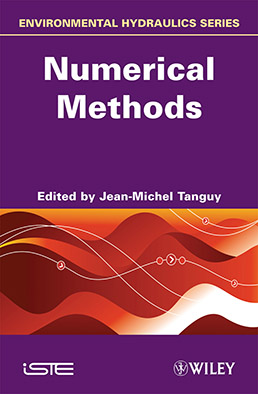
The study and management of water resources – especially the quantitative approach taken through the science of hydraulics and hydrology – is becoming increasingly important as those resources are affected by increasing population and development, the demands and consumption of industry, pollution, and climate change. Since the existence of water in the environment is also related to the role it plays in many other processes – from weather phenomena and climate, including heat transport in the atmosphere and oceans, to shaping the physical geography and geology of the landscape of rivers, plains, and coastal regions through erosion and deposition – this is a complex and interrelated field relating ecosystems, geography, climate, and planning and development among other topics.
This series of five volumes focused on environmental hydraulics studies the complete water (or hydrologic) cycle from meteorology to coastal morpho-dynamics, including looking at river hydraulics, hydrogeology and marine hydraulics. It describes these physical processes, and how they are observed in the real world, from catchment basins or watersheds where precipitation first falls, all the way through the transport of water to the sea. An inventory of ground measurement instruments, which provide necessary input data for the various modeling tools described in the book, is drawn up, and mathematical models describing each field within the overall subject area are detailed by a series of system equations. These are then solved by the use of numerical methods adapted to the particular characteristics of the application in question.
Many of the key modeling tools used by engineers in practice in the field are described in detail, as well as numerous examples of the application of the methods to real world problems, presented as case studies that highlight all of the processes described above.
Volume 3 focuses on the main numerical methods used in each major scientific field within the discipline to translate mathematical models into numerical tools, and hence to solve the problems posed by real-world scenarios.
Part 1. General Considerations Concerning Numerical Tools
1. Feedback on the Notion of a Model and the Need for Calibration, Denis Dartus.
2. Engineering Model and Real-Time Model, Jean-Michel Tanguy.
3. From Mathematical Model to Numerical Model, Jean-Michel Tanguy.
Part 2. Discretization Methods,
4. Problematic Issues Encountered, Marie-Madeleine Maubourguet.
5. General Presentation of Numerical Methods, Serge Piperno and Alexandre Ern.
6. Finite Differences, Marie-Madeleine Maubourguet and Jean-Michel Tanguy.
7. Introduction to the Finite Element Method, Jean-Michel Tanguy.
8. Presentation of the Finite Volume Method, Alexandre Ern and Serge Piperno, section 8.6 written by Dominique Thiéry.
9. Spectral Methods in Meteorology, Jean Coiffier.
10. Numerical-Scheme Study, Jean-Michel Tanguy.
11. Resolution Methods, Marie-Madeleine Maubourguet.
Part 3. Introduction to Data Assimilation
12. Data Assimilation, Jean Pailleux, Denis Dartus, Xijun Lai, Jérôme Monnier and Marc Honnorat.
13. Data Assimilation Methodology, Hélène Bessière, Hélène Roux, François-Xavier Le Dimet and Denis Dartus.
Jean-Michel Tanguy is a French civil engineer who passed a master degree in Ice Hydraulics and a PhD in River Sediment Transport Modeling at Laval University, Quebec.